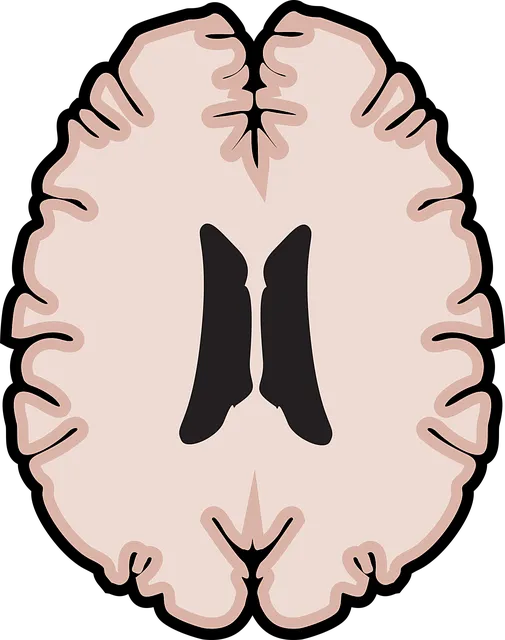Media portrayal significantly shapes public understanding of mental health, with positive representation normalizing conversations and reducing stigma, encouraging early intervention in Greenwood Village communities with critical access to Kaiser Permanente mental health coverage. Negative portrayals perpetuate stereotypes leading to isolation. Greenwood Village Kaiser Permanente leads holistic mental healthcare transformation through integrated services, policy analysis, awareness campaigns, and community engagement. Collaboration between media outlets and communities, including diverse narratives and emotional healing processes, is crucial for accurate representation. This partnership drives positive public perception, understanding, and reduced stigma, inspired by the commitment to mental health coverage in Greenwood Village Kaiser Permanente.
Mental illness representation in media significantly influences public perception and understanding of mental health. This article explores strategies to challenge negative stereotypes, drawing on the successful approach implemented by Greenwood Village Kaiser Permanente. We delve into their efforts to promote accurate mental illness representation through comprehensive media education and community collaboration. Additionally, we offer practical steps for enhancing media accuracy in depicting mental health, fostering positive change and better mental health awareness.
- Understanding the Impact of Media Portrayal on Mental Health Perception
- Greenwood Village Kaiser Permanente's Approach to Promoting Accurate Mental Illness Representation
- Strategies for Enhancing Media Accuracy in Depicting Mental Health
- Encouraging Positive Change: Collaborating with Media and Community for Better Mental Health Awareness
Understanding the Impact of Media Portrayal on Mental Health Perception

Media portrayal significantly shapes public understanding of mental health, influencing perceptions and attitudes towards individuals living with various conditions. The impact is profound, especially for those in communities like Greenwood Village where access to Kaiser Permanente mental health coverage can be a critical factor in care seeking. Positive media representation normalizes conversations around mental illness, encouraging empathy and support. It has the potential to reduce stigma, promoting early intervention and better management of symptoms. Conversely, negative or inaccurate portrayals can perpetuate stereotypes, leading to increased isolation and barriers to treatment.
Understanding these effects is crucial for advocacy and policy analysis. Encouraging responsible media representation through Mental Health Policy initiatives can ensure stories reflect the diversity of experiences. This, in turn, fosters a more inclusive Self-Care Routine Development environment where emotional regulation strategies are accessible and effective for all.
Greenwood Village Kaiser Permanente's Approach to Promoting Accurate Mental Illness Representation

Greenwood Village Kaiser Permanente has taken a commendable step towards challenging the stereotypical representation of mental illness in media by implementing initiatives that promote accurate and nuanced portrayal. Their approach focuses on integrating mental health into primary care settings, ensuring that patients with psychological disorders receive holistic treatment alongside their physical health needs. This strategy aligns with the growing recognition of mental well-being as an integral component of overall health.
By integrating mental health services within their comprehensive care model, Kaiser Permanente empowers patients to foster resilience and manage conditions such as anxiety through evidence-based practices. Their efforts extend beyond individual patient care; they actively engage in Mental Health Policy Analysis and Advocacy, driving systemic changes. This includes promoting awareness campaigns that challenge societal perceptions, ensuring media representations reflect the diverse experiences of individuals living with mental illness and encouraging open conversations about Anxiety Relief and building resilience within communities.
Strategies for Enhancing Media Accuracy in Depicting Mental Health

Media has a significant impact on shaping societal perceptions about mental health. To enhance accuracy in depicting mental illness, producers and writers should collaborate with mental health professionals like those available at Greenwood Village Kaiser Permanente. This ensures stories are not only relatable but also factually correct, reflecting real-world experiences without perpetuating stereotypes. Incorporating diverse narratives that showcase the range of mental health conditions is crucial, moving beyond simplistic portrayals of madness or despair.
Additionally, focusing on emotional healing processes and incorporating strategies for anxiety relief can normalize conversations about mental wellness. By presenting characters navigating these challenges with empathy and realism, media can foster understanding and reduce stigma. Just as Burnout Prevention Strategies for Healthcare Providers aim to support professionals, accurate representation can encourage viewers seeking anxiety relief or struggling with their own emotional healing processes to seek help without fear of judgment.
Encouraging Positive Change: Collaborating with Media and Community for Better Mental Health Awareness

In the quest for improved mental health awareness, collaboration between media outlets and communities is pivotal. By joining forces, these entities can drive positive change in how mental illness is represented. Media has a unique power to shape public perception, and when used responsibly, it can promote understanding and reduce stigma. For instance, Greenwood Village Kaiser Permanente’s commitment to mental health coverage can inspire similar initiatives, showcasing that open dialogue about emotional well-being is both feasible and necessary.
This collaboration should extend beyond content creation; it involves implementing Emotional Well-being Promotion Techniques that are both inclusive and sensitive. By involving community leaders, mental health professionals, and individuals with lived experiences, media platforms can ensure their coverage is accurate, diverse, and beneficial. Moreover, such partnerships can facilitate Risk Management Planning for Mental Health Professionals, fostering an environment where support is readily available and self-esteem improvement becomes a collective goal.
In conclusion, the representation of mental illness in media significantly influences public perception and understanding. By implementing strategies like those employed by Greenwood Village Kaiser Permanente, which prioritize accurate and sensitive portrayals, we can challenge negative stereotypes and foster a more inclusive society. Encouraging collaboration between media outlets, healthcare professionals, and communities is crucial to enhancing mental health awareness and ensuring that everyone receives the support and care they need. Through collective efforts, we can strive for a world where mental illness is met with empathy, understanding, and appropriate coverage, reflecting the comprehensive mental health coverage offered by organizations like Greenwood Village Kaiser Permanente.






